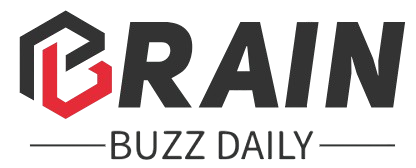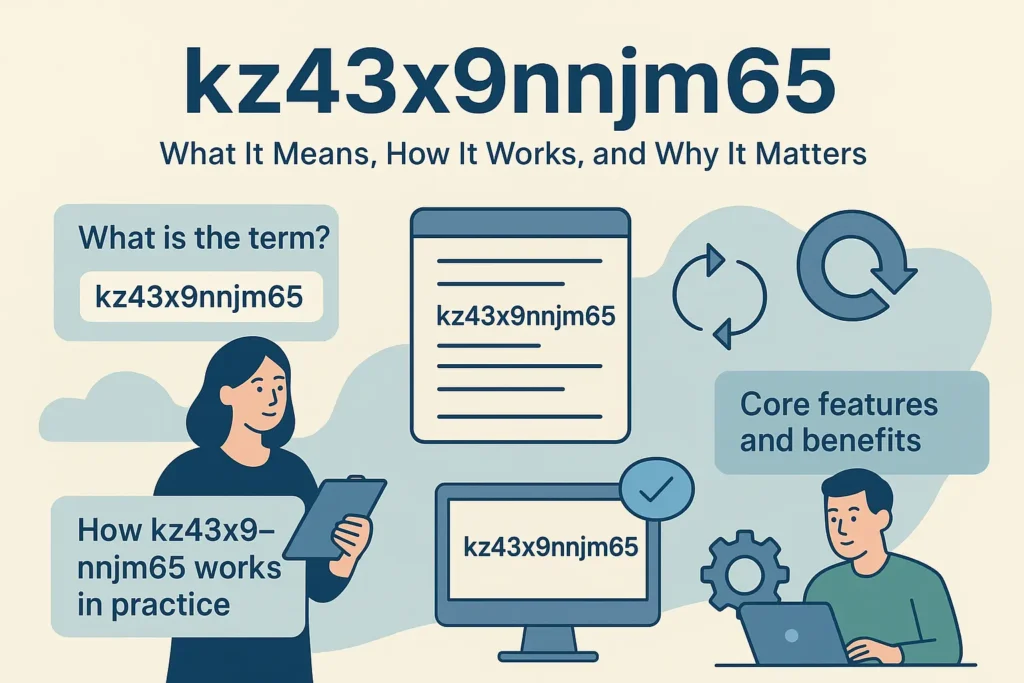If you’ve come across kz43x9nnjm65 in documentation, dashboards, or product notes, you’re not alone. The term typically surfaces as a compact, unique token that systems use to tag events, versions, or assets. In practice, readers care less about the letters themselves and more about how such a code supports traceability, performance insights, and reliable operations across tools and teams.
What is the term?
In most environments, kz43x9nnjm65 functions as a context-dependent identifier. It can represent a release build, a dataset snapshot, a campaign tag, a feature flag, or a secure reference to a record without exposing personal details. Because teams name tokens differently, kz43x9nnjm65 should be treated as a label whose meaning is defined locally—through internal glossaries, runbooks, and conventions. When governed well, kz43x9nnjm65 ties a human-friendly description to a machine-precise handle so teams can search, audit, and roll back with confidence.
How kz43x9nnjm65 works in practice
Organizations typically bind the token to structured metadata. For example, a deployment pipeline might attach kz43x9nnjm65 to commit hashes, environment names, and timestamps; an analytics platform might link it to source, medium, and segment; an operations console might store it with status, owner, and change history. With consistent tagging, queries become straightforward: trace an issue to the exact build, attribute conversions to the right campaign, or confirm which configuration was live at a certain hour.
Core features and benefits
A well-implemented kz43x9nnjm65 often delivers clarity and speed. It reduces ambiguity during incident response, shortens the path from alert to root cause, and helps teams coordinate across engineering, product, and marketing. Because the token anchors logs and metrics to the same reference, it improves reporting accuracy and prevents “multiple truths” in postmortems and business reviews. Over time, this single source of reference strengthens accountability and decision quality.
Common use cases by industry
Many teams adopt kz43x9nnjm65 to unify versions and activities across tools. In software delivery, it marks the exact package that reached production. In data operations, it denotes a specific extract or model snapshot. In marketing, it distinguishes one creative or channel from another. In support, it links a customer ticket to the relevant configuration. Across these settings, kz43x9nnjm65 keeps evidence aligned so each stakeholder can act on reliable context.
Implementation checklist
Start by defining ownership, scope, and format. Decide who issues kz43x9nnjm65, when it is created, and which systems must store it. Document the character set, length, and collision policy. Add the token to logs, events, and database schemas; expose it in dashboards and admin views so people can copy and search it easily. Finally, write a short resolver procedure—given kz43x9nnjm65, any teammate should know how to find its metadata in seconds.
Data security and compliance
Treat the token as sensitive metadata even if it does not contain personal information. Store kz43x9nnjm65 in secure tables, restrict access with least privilege, and redact it in public channels. If the token appears in exports or shareable screenshots, ensure masking policies are clear. Review how long you retain records that reference kz43x9nnjm65 and make sure retention aligns with legal and contractual requirements. Strong stewardship prevents accidental disclosure and builds trust.
Troubleshooting and diagnostics
When incidents arise, start with the token. Search for kz43x9nnjm65 across logs to confirm the timeline, then pivot into related metrics and configuration history. Compare observed behavior against the expected behavior documented for that token. If multiple systems disagree, the mismatch often reveals the root cause—an out-of-date release, a partial rollout, or a stale cache. Close the loop by updating the runbook so the next responder can reproduce your steps.
Metrics to monitor
Measure adoption and data quality. Track the percentage of events that include kz43x9nnjm65, the number of duplicate or malformed tokens detected, and the average time to resolve an issue when the token is present versus missing. Monitor cross-tool coverage—how many dashboards, exports, and tickets carry the token end to end. These simple measures keep the practice healthy and prove its value to leadership.
Staying resilient through search updates
If your documentation or public pages mention the token, structure the content for discoverability and clarity. Use plain language around the code, provide definitions, and keep pages updated after major search engine changes. When a broad update rolls out, refresh headings, tighten summaries, and prune thin or repetitive sections. Consistent structure and helpful explanations tend to withstand fluctuations while serving readers first.
Future outlook for kz43x9nnjm65
Expect the token to gain richer context as systems become more interconnected. Teams will attach structured attributes—owner, risk level, rollout stage—so that a single query reveals the full picture. Over time, organizations may also standardize the lifecycle around kz43x9nnjm65: proposal, approval, rollout, review, and archival, all tracked in one place. That maturity transforms a simple label into a dependable backbone for collaboration.
Conclusion
A compact code has outsized impact when it links people, data, and decisions. By defining clear ownership, embedding the token everywhere it matters, and enforcing sound governance, you turn kz43x9nnjm65 from a mysterious string into a practical lever for speed, quality, and accountability. Done well, this approach reduces confusion, accelerates problem solving, and preserves a trustworthy record of what changed and why.
FAQs
What is this token used for?
It serves as a unique handle that ties events, versions, or assets to the right context so teams can find, audit, and act quickly.
How do I find details linked to the token?
Use your team’s resolver process—typically a dashboard, search console, or internal tool—to pull the metadata attached to the code.
Does the token store personal information?
No. It should reference records indirectly. Keep it protected, but avoid embedding personal data inside the code itself.
How often should the token appear in systems?
As often as needed to preserve traceability—logs, tickets, releases, exports, and dashboards should all include it consistently.
What if different tools show conflicting information?
Start with the timeline, compare configurations, and reconcile sources. Conflicts usually point to a partial rollout, stale data, or missed updates.

